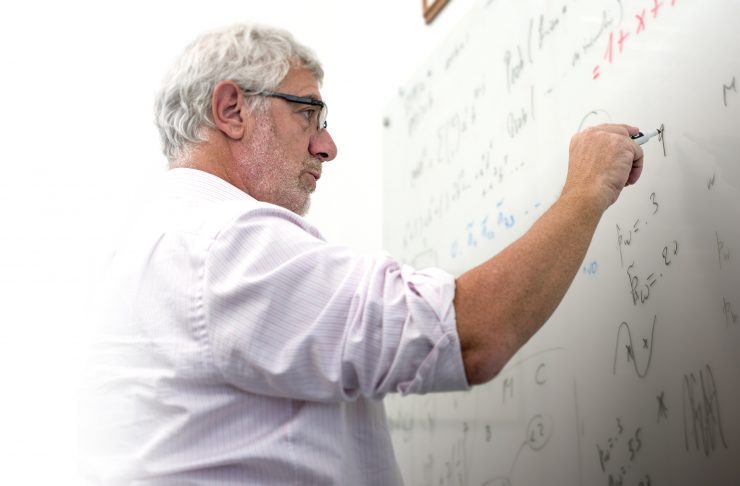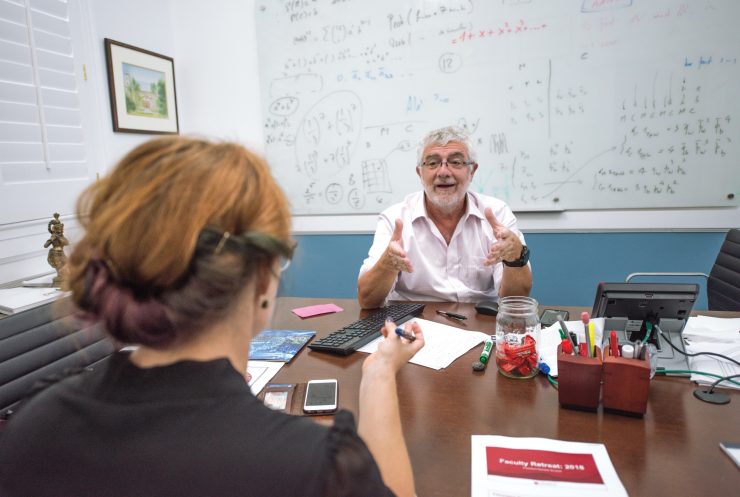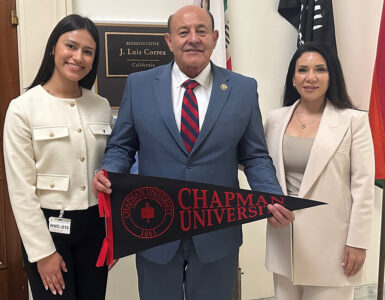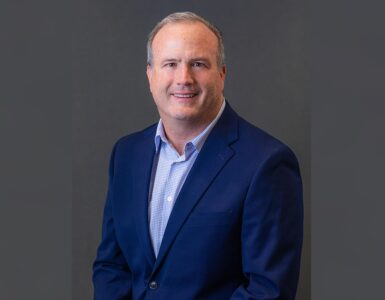Tent-bound at 21,000 feet on the side of Cho Oyu in the Himalayas, Daniele Struppa recovered from altitude-induced edema and did the only other reasonable thing he could. He started work on a research paper exploring a mathematical theory he had been carrying with him for a while.
“It wasn’t the full-fledged paper,” he clarified. “But with math, you can do the work in a very austere environment.”
An avid mountaineer as well as an internationally known mathematician, Struppa has also toted his affinity for research to the tops of peaks in the Alps and Andes. In his current role as president of Chapman University, his research explorations continue.
Far from base camp, in the comfort of his Memorial Hall office and within arm’s reach of his well-used whiteboard, we sat down with Struppa to ask him about the ascendant world of research at Chapman.
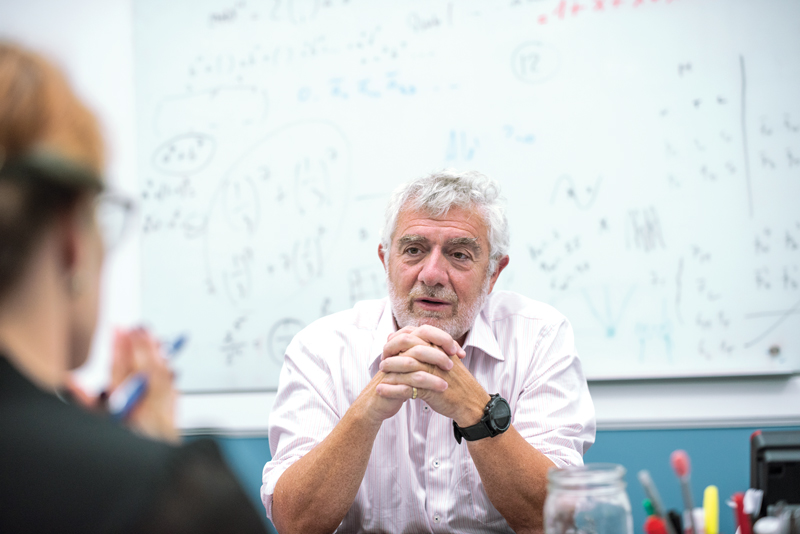
What distinguishes Chapman as a research institution?
Our researchers are very involved as teachers. If you go to a think tank or a national lab, you do research all day. If you go to most universities, you often find faculty who teach in a classroom, but who are not researchers.
Chapman is different. As a scholar, I teach classes because my intellectual interests change. I want to be sure that what I’m talking about is stimulating my thinking, not just a repetition of what I know. Because if it were that, well, I wouldn’t go to class.
I believe that’s what makes Chapman a special place. Our ability to bring research into the classroom keeps it alive, exciting, new, challenging, different. That’s what a class should be.
What’s your current research project?
I’m involved in three or four projects. My longest one has stretched over 10 years and is related to work with Chapman physicist (and National Medal of Science winner) Yakir Aharonov. It started with a question: “How can you take some very low-energy light, such as infrared, then use it to create high-energy light, such as gamma rays?” His question took him to a paradoxical place in mathematics, so his task for me was to help him understand the mathematics and show whether this phenomenon was real and how you could explore it in the best possible way.
Another project is a book looking at how mathematics shaped culture and philosophy. My co-authors and I pick moments in the history of humanity where interesting changes occurred, and we explore how mathematics played a role. For instance, the development of perspective in painting is actually a mathematical construction – math and painting moving together.
Another chapter is about navigation instruments and how when we entered the Age of Discovery and started crossing the oceans, we needed new discoveries in math to make that happen. The book is designed to be for a large audience, which is one of the challenges: presenting mathematical ideas in ways that are appealing to a variety of people.
How does your research connect to your teaching?
With the book, some of the foundational ideas came from discussions and writings of students in a class I taught. In particular, the chapter on navigation is an elaboration of something written by one of my students. For the students, there’s engagement in intellectual invention rather than just listening to someone talk about stuff.
Given your presidential obligations, what drives you to continue with your research?
It’s a little addictive, in a good sense.
I often say to my kids that one of the things that sets humans apart from other animals is our inherent curiosity. When you stifle curiosity, especially in younger years, you end up with people who may not be helpful to themselves or others. So the question is, really, what can you do to maintain that curiosity?
I’ve been lucky in my life and have never lost my curiosity. The more I discover, the more I want to know. As researchers, we figure out new things and then there’s the next natural question. I know that’s the way it works in mathematics.
What’s next for research at Chapman?
We’re going to see an incredible increase – even more than we have seen recently, thanks to the incredible faculty that we have hired.
Our scholarly publications have spiked from 64 in 2007 to 461 in 2017. Our citation numbers have grown from 36 in 2007 to 4,320 in 2017. That means that every day, on average, there are 12 people citing one of our papers. The rise is dramatic. And not only are we publishing a higher volume, but we’re producing a high quality. That’s backed up by the citation numbers.
These numbers – 461 and 4,320 – show that not only are we publishing more, but our work is more impactful. This perfectly demonstrates the transformation of our institution.
